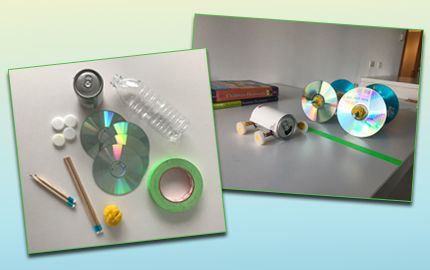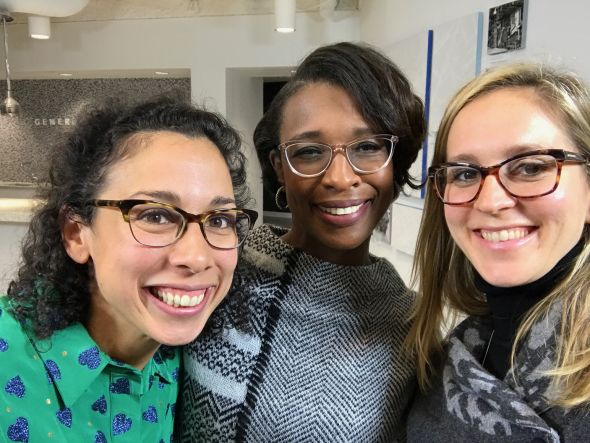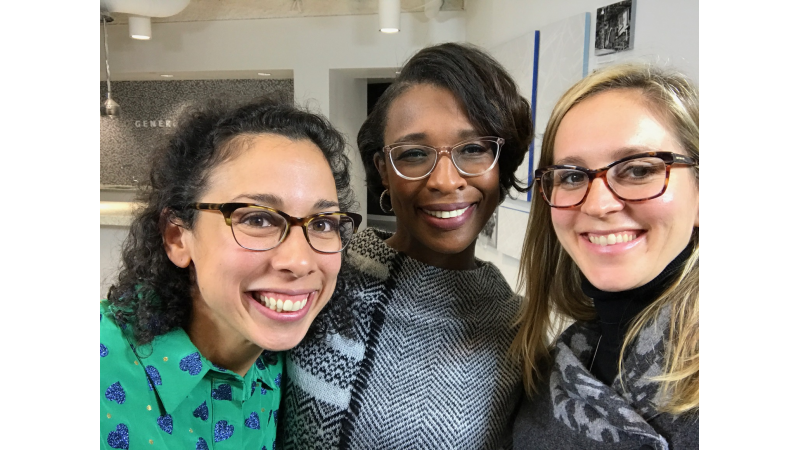Guest post by Alexa Kurzius, DynaMath Editor
The day I met Alicia Boler Davis is one I will never forget. The STEM leader is chief of manufacturing and labor relations at General Motors (GM). An engineer and an executive, she’s supervises 150,000 employees and the production of more than 9 million vehicles each year worldwide.
I met Boler Davis while shooting this video for the March issue of DynaMath, Scholastic’s classroom magazine about math for grades 3 through 5. It’s our mission to make math meaningful and accessible for students of all backgrounds and learning levels. Watch the video here:
Part of this mission involves highlighting the successes of underrepresented groups in STEM careers. Boler Davis is a perfect example. She was one of two African-American chemical engineers in her college class. Then Boler Davis became the first African-American female to run an assembly plant at GM. You can read more about her in DynaMath here.
Now, Boler Davis encourages people of all backgrounds to pursue her beloved field.
“Engineers have an opportunity to change the world,” she says.
And everyone can do it.
Diverse role models in STEM
All students need role models—at home, in the classroom, and in the workforce. One way to perceive a role model is to identify with someone that looks like you. A 2017 study reported that when students have a teacher with the same race or gender, they try harder, feel happier, and feel more cared for in class. Not only that, they report being more confident of their teacher’s ability to communicate with them and have higher college aspirations. Black students benefited the most when paired with a teacher that matched their race and gender.
In education, only about 18% of teachers are people of color.
“These findings support the idea that students do better in school when they can view their teachers as role models,” study co-author Brian Kisida told NPR.
The same idea applies in the workforce, and this can go a long way to increase diversity in STEM fields. Presently, most engineers in the American workforce are white men. According to a 2017 National Science Foundation report, women of all races make up about 27% of the science and engineering workforce, and only about 2% of those women are African American.
Even though she is one of the few women in her field, Boler Davis sees her experience as “an inspiration for me to keep going because then maybe I could be an inspiration for someone else,” she says.
Encouraging elementary STEM learning
Educators have the power to make a big impact on students. They can expose students to career paths they might not learn about otherwise, including STEM jobs.
To have a STEM career, you need to study a STEM discipline in college. To get to college, you need to take science and math courses in high school, which means being exposed to the subjects at the middle and elementary level. So in other words, you can never start science and math education too early.
Boler Davis knows what it’s like to explore science topics early because she did so herself. As a kid, she was household handyman, fixing appliances such as the radio, toaster, and iron. Her family encouraged it and was delighted at the results. Later, a middle school teacher noticed her scientific curiosity and encouraged her to become an engineer.
The Next Generation Science Standards (NGSS) — now adopted in 19 states and the District of Columbia—includes inquiry-based curriculum beginning in kindergarten. According to the National Science Teachers Association (NSTA), elementary students learn science best when they explore, investigate, and partake in inquiry and process skills.

Understanding that students need science activities that allow them to explore and investigate, we designed a hands-on activity to accompany the story about Alicia Boler Davis. Students build and test two different toy cars. Here's how our team created it in the office.
DynaMath includes a hands-on activity each month as does SuperScience, our elementary magazine about science for students in grades 3 through 6. Both magazines are part of our ongoing commitment to provide standards-based STEM resources that enrich your classroom efforts and students’ lives.
Learn more about all of our STEM magazines here.
---

Alexa Kurzius (@ackurzius) is the Senior Associate Editor on DynaMath, one of Scholastic’s elementary STEM magazines.



